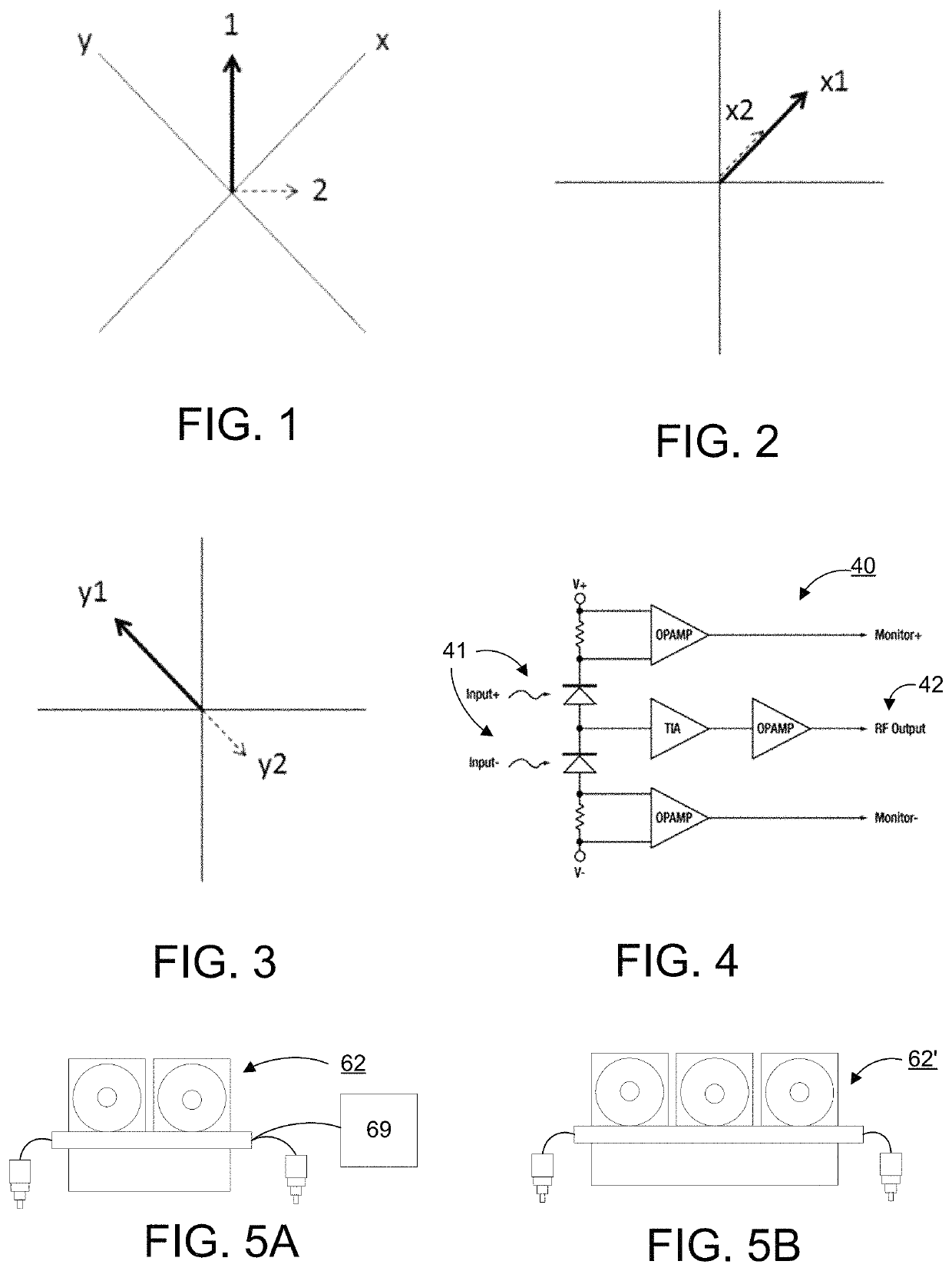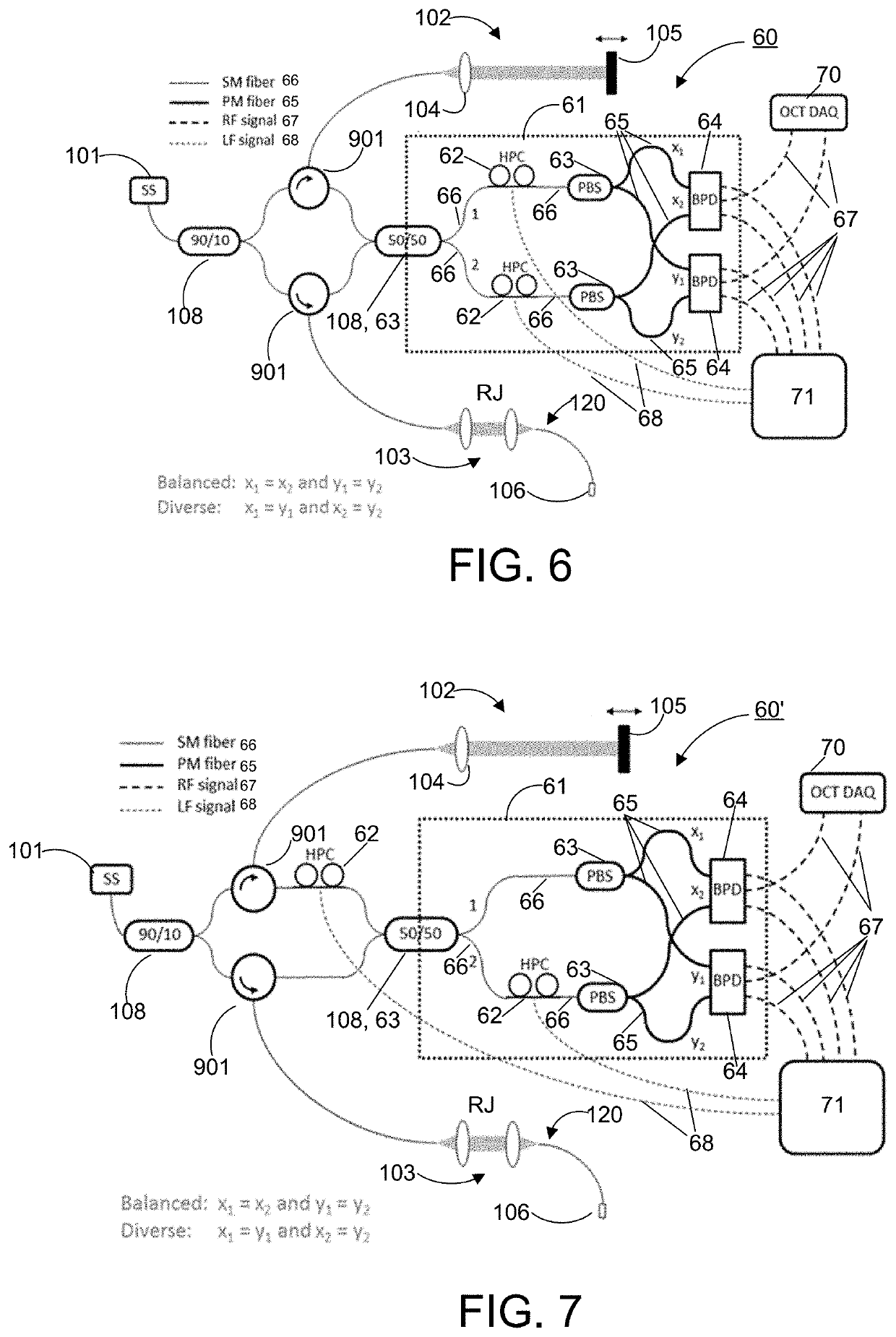Automated polarization control
a polarization control and automatic technology, applied in the field of medical imaging and processing medical image data, can solve the problems of loss of interfering signal, inability to efficiently deal with two electromagnetic waves, lack of clarity regarding how to best, etc., to reduce the relative intensity noise, reduce the error signal, and improve the processing speed and accuracy
- Summary
- Abstract
- Description
- Claims
- Application Information
AI Technical Summary
Benefits of technology
Problems solved by technology
Method used
Image
Examples
Embodiment Construction
[0052]Embodiments will be described below with reference to the attached drawings. Like numbers refer to like elements throughout. It shall be noted that the following description is merely illustrative and exemplary in nature, and is in no way intended to limit the disclosure and its applications or uses. The relative arrangement of components and steps, numerical expressions and numerical values set forth in the embodiments do not limit the scope of the disclosure unless it is otherwise specifically stated. Techniques, methods, and devices which are well known by individuals skilled in the art may not have been discussed in detail since an individual skilled in the art would not need to know these details to enable the embodiments discussed below. Further, an endoscope as disclosed in the following which is used to inspect an inside a human body may also be used to inspect other objects. Examples of specialized endoscopes which are examples of endoscope in which an embodiment may ...
PUM
 Login to View More
Login to View More Abstract
Description
Claims
Application Information
 Login to View More
Login to View More - R&D
- Intellectual Property
- Life Sciences
- Materials
- Tech Scout
- Unparalleled Data Quality
- Higher Quality Content
- 60% Fewer Hallucinations
Browse by: Latest US Patents, China's latest patents, Technical Efficacy Thesaurus, Application Domain, Technology Topic, Popular Technical Reports.
© 2025 PatSnap. All rights reserved.Legal|Privacy policy|Modern Slavery Act Transparency Statement|Sitemap|About US| Contact US: help@patsnap.com



